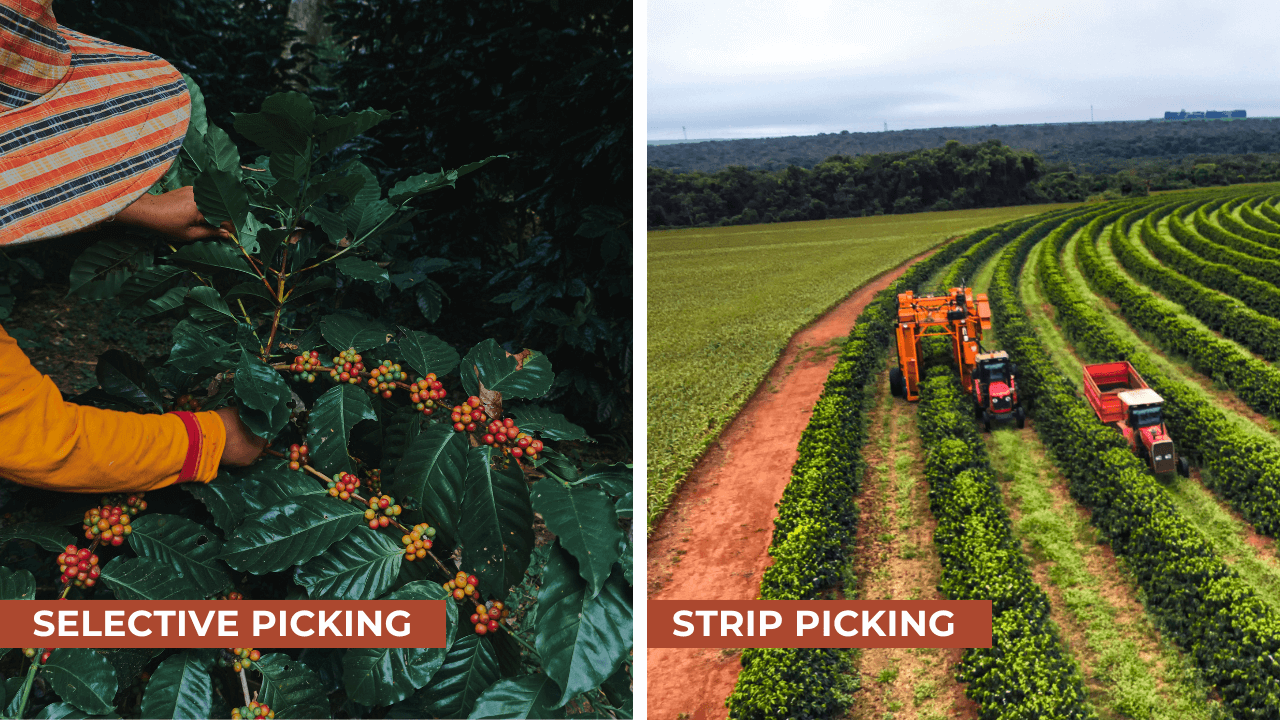Unveiling the Journey: Steps of Coffee Processing for Quality Excellence
Unveiling the Journey: Steps of Coffee Processing for Quality Excellence
Blog Article

Coffee processing is a meticulous art, transforming humble cherries into the aromatic brew we love. Understanding this journey not only enhances your appreciation of coffee but also equips you with knowledge to select the best beans. In this detailed guide, we’ll explore each step of coffee processing, from harvesting to packaging, highlighting key methods, benefits, and flavor impacts.
1. Harvesting: The Foundation of Quality
The journey begins with harvesting, a critical phase that determines the quality of the coffee. There are two primary methods:
Selective Picking
What it is: This labor-intensive technique involves handpicking only the ripest cherries.
Flavor impact: Ensures peak flavor potential in every bean.
???? Fun Fact: It takes about 2,000 hand-picked cherries to yield just one pound of roasted coffee!
Strip Picking
What it is: A quicker method where all cherries are stripped from the branch, regardless of ripeness.
Flavor impact: While faster, it can result in a mix of flavors, leading to inconsistencies.
Global Harvesting Variations
Different regions have varied harvest seasons, influenced by climate. For instance, Colombia enjoys two harvests a year, providing a steady supply of fresh beans.
2. Preliminary Processing: Where Flavor Begins
Once harvested, the cherries enter preliminary processing, setting the stage for flavor development. The chosen method significantly impacts the final brew.
Dry Processing (Natural)
What it is: Cherries are sun-dried intact, allowing the fruit's sweetness to infuse the beans.
Flavor profile: Heavier body, lower acidity, with fruity notes like blueberry or tropical flavors.
Key Notes: Requires careful moisture control to prevent fermentation or mold.
Wet Processing (Washed)
What it is: Involves removing the cherry's skin and pulp immediately, followed by fermentation to eliminate mucilage.
Flavor profile: Produces a clean, bright cup with higher acidity and distinct citrus or floral notes.
Honey Processing (Pulped Natural)
What it is: A hybrid method where some mucilage remains on the bean during drying.
Flavor profile: Balances the sweetness of natural processing with the clarity of washed coffees, resulting in a smooth, sweet cup.
Special Processing Methods
Innovative techniques like anaerobic fermentation and carbonic maceration are gaining traction, allowing for unique flavor profiles and enhanced fruitiness.
3. Separation: Ensuring Quality
As we advance in processing, separation plays a vital role in maintaining quality.
Water Separation
How it works: Ripe cherries sink in water tanks, while defective ones float. This method helps in selecting the best cherries for processing.
Mechanical Sorting
How it works: Utilizing screens, air jets, and vibrating platforms, this method separates cherries based on size and density, ensuring only high-quality beans proceed.
Importance of Separation:
Quality Control: Removing defective cherries enhances the overall quality.
Consistency: Uniformity in size and quality ensures even roasting.
Efficiency: Saves time and resources later in the process.
4. Drying: The Art of Precision
Drying is where beans undergo careful moisture management. This stage is crucial for flavor preservation.
Sun Drying
What it is: Beans are spread out in the sun for natural drying.
Pros: Enhances flavor complexity.
Cons: Weather-dependent and time-consuming.
Mechanical Drying
What it is: Provides controlled heat and airflow for consistent drying.
Pros: Faster and more reliable, ensuring optimal moisture content (10-12%).
5. Hulling: Revealing the Beans
Hulling removes the outer layers of the beans, unveiling their true character.
Dry Hulling
Used for: Dry-processed beans, removing the dried fruit layer.
Wet Hulling
Used for: Popular in Indonesia, hulling occurs while the beans are still wet, contributing unique earthy flavors.
6. Cleaning: The Final Detox
Post-hulling, beans undergo a thorough cleaning process:
Air blowers: Remove dust and debris.
Vibrating screens: coffee processing flow chart Shake off particles.
Gravity tables: Sort beans by density for optimal quality.
7. Sorting: The Coffee Olympics
During sorting, beans are categorized to ensure only the best make it through:
Size Sorting: Larger beans typically have better flavor.
Weight Sorting: Heavier beans are often of higher quality.
Color Sorting: Defective beans are removed using high-tech cameras.
8. Polishing: A Touch of Glamour
Polishing is optional, removing remaining silver skin to enhance appearance without significantly impacting flavor.
9. Grading: The Quality Report Card
Coffee beans receive a grade based on size, weight, and quality. Specialty coffee is rated on a scale from 1 to 100, with 80+ considered top tier.
???? Did you know? A score of 80+ is like getting an A+ on your coffee exam!
10. Packaging: Ready for the Journey
The final step is packaging, where beans are sealed for freshness. Options include burlap sacks and vacuum-sealed bags, with nitrogen-flushed bags offering the best protection against spoilage.
Conclusion
The journey of coffee processing is an intricate dance of tradition and innovation, where each step contributes to the final flavor profile. From the careful harvesting methods to the precision of drying and sorting, understanding this process enhances your appreciation of every cup. Next time you brew your favorite coffee, reflect on the craftsmanship behind it, and consider exploring different processing methods to discover new flavors. What intrigues you most about coffee processing? Share your thoughts and let’s keep the conversation brewing!